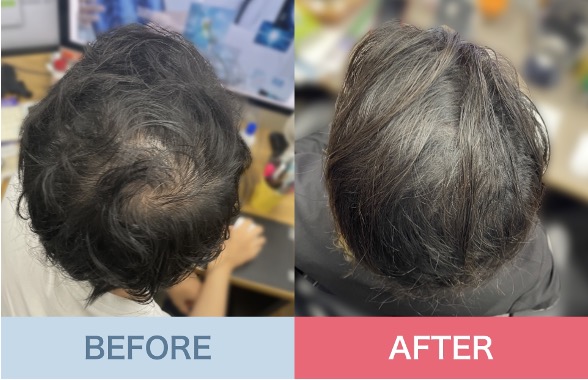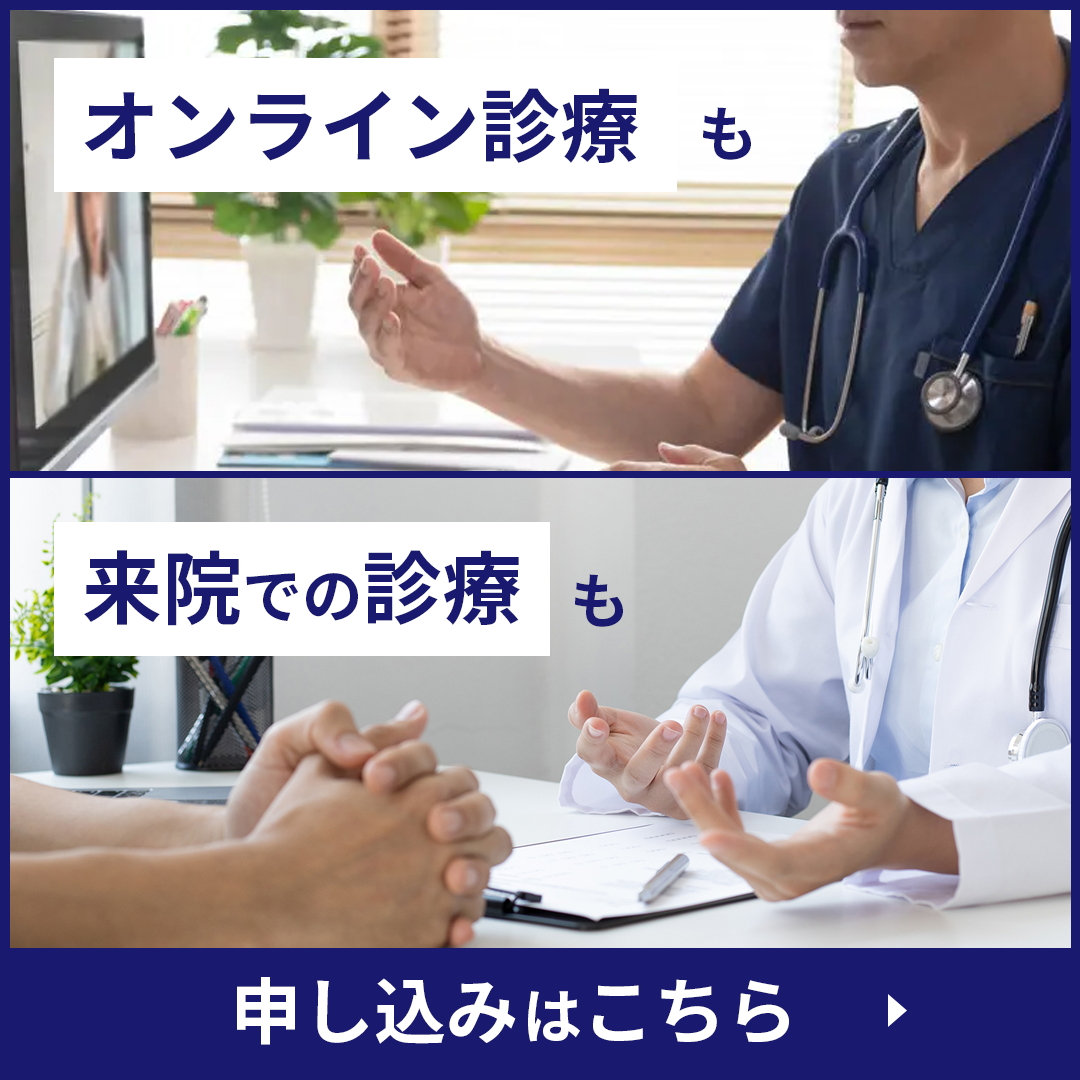Hair loss and thinning hair can be a significant concern for men, often leading to feelings of insecurity.
This condition is known as AGA (Androgenetic Alopecia), and while it is commonly associated with middle-aged and older men, it can also develop in individuals in their 20s.
However, addressing AGA at an early stage may help prevent further hair loss and thinning.
This article explores the importance of early AGA treatment, available treatment options, and the associated costs.
Contents
- 1 AGA in Your 20s
- 2 Causes of AGA in Your 20s
- 3 Can AGA Be Cured in Your 20s? The Importance of Early Treatment
- 4 Types of AGA Treatment for Individuals in Their 20s
- 5 Cost of AGA Treatment
- 6 How to Achieve Successful AGA Treatment in Your 20s
- 7 AGA Treatment for Individuals in Their 20s: Visit Men’s Pride Clinic MITA TOKYO
- 8 Conclusion
AGA in Your 20s

Many people associate AGA with older men, but is it possible for it to develop in your 20s?
First, let’s examine what AGA is, its symptoms, and how it relates to age.
What Is AGA?
AGA, also known as “male hormone-type alopecia” or “male pattern baldness,” is a condition in which hair volume decreases due to the influence of male hormones and genetic factors.
Normally, hair follows a growth cycle lasting about two to six years before falling out and regenerating. However, a male hormone called DHT (Dihydrotestosterone) disrupts this cycle.
As a result, hair falls out before it fully grows, leading to a gradual reduction in overall hair volume.
AGA progresses in different patterns, including:
- O-pattern: Thinning starts from the crown of the head.
- M-pattern: Hair loss begins at both sides of the forehead.
- U-pattern: The hairline recedes from the center of the forehead.

Can AGA Develop in Your 20s?
As mentioned earlier, AGA is primarily caused by DHT, and while it is more common in men in their 30s and older, it is not strictly an age-related condition.
This means that AGA can also develop in individuals in their 20s.
In fact, many young adults struggle with AGA, and studies suggest that the onset age has been decreasing in recent years.
Therefore, instead of assuming “I’m still young, so I’m fine,” it is crucial to regularly monitor hair loss and take preventive measures early.
Causes of AGA in Your 20s

What are the factors that can cause AGA to progress at a young age?
Genetic Factors
Genetics play a significant role in the onset of AGA.
If your parents or grandparents have a history of hair loss, you may have inherited genes that make you more prone to thinning hair.
As a result, hair loss may start at an earlier age, particularly around the crown or hairline.
Hormonal Imbalance
When the male hormone testosterone combines with the enzyme 5-alpha reductase, it converts into DHT (Dihydrotestosterone), which damages hair follicles.
Although hormonal balance naturally changes with age, various factors beyond aging can also contribute to imbalances, increasing the likelihood of AGA developing in your 20s.
Stress
Chronic stress can disrupt the autonomic nervous system, leading to poor blood circulation and hormonal imbalances.
This can interfere with the hair growth cycle, making individuals more susceptible to AGA.
In your 20s, major life transitions—such as graduating from college and starting a job—can be stressful. Work pressure and lifestyle changes may further accelerate AGA progression.
Poor Lifestyle Habits
Unhealthy habits, such as an unbalanced diet, lack of sleep, and smoking, can contribute to AGA.
Young adults often consume high-fat, high-sugar foods and excessive alcohol, which can negatively impact hair health. These habits can weaken hair roots and increase hair loss over time.
Can AGA Be Cured in Your 20s? The Importance of Early Treatment
For many individuals in their 20s, having a full head of hair may seem natural. However, experiencing AGA at a young age can be a shocking and distressing experience.
Notably, AGA is not a temporary form of hair loss but a progressive condition. Once it develops, it is considered impossible to fully restore hair to its original state.
However, if treatment begins at an early stage, it is possible to slow down AGA progression and reduce the risk of severe hair thinning.
Additionally, hair follows a growth cycle of about 2 to 6 years, and a person’s lifetime hair cycle is estimated to be around 15 cycles.
When AGA occurs, this cycle shortens drastically, leading to rapid hair loss.
If treatment is delayed, individuals may reach their hair cycle limit prematurely, making it difficult to restore hair even with treatment.
Thus, early intervention is key to successful AGA management.
Types of AGA Treatment for Individuals in Their 20s

There are various treatment options for AGA, each with different durations and approaches. Below are some of the most common treatments available.
Oral Medications
One of the most widely used AGA treatments is oral medication.
Some common prescription drugs include:
- Propecia (Finasteride) – Suppresses the action of DHT to slow down hair loss.
- Minoxidil – Promotes hair growth by increasing blood circulation in the scalp.
Most oral medications are taken once daily, making them convenient for individuals with busy lifestyles.
However, as with any medication, there is a risk of side effects, so it is important to consult a doctor before starting treatment.
Topical Medications
Another treatment option is topical medication, which is applied directly to the scalp to promote hair growth.
Minoxidil is available in both oral and topical forms and is often used alongside other treatments for enhanced effectiveness.
Mesotherapy
Mesotherapy is a treatment in which hair growth-promoting ingredients are injected directly into the scalp.
This method delivers high concentrations of growth factors and exosomes, which can significantly stimulate hair regeneration.
Treatment sessions are typically performed once every few weeks, and visible results may be expected after 6 months to 1 year. However, effectiveness varies depending on individual hair conditions and overall health.
Hair Transplantation
Hair transplantation is a surgical method that involves implanting hair follicles into bald areas.
There are two main types of hair transplants:
- Autologous Hair Transplant: Uses the patient’s own hair follicles.
- Artificial Hair Transplant: Uses synthetic hair strands.
Unlike other treatments that promote natural hair growth, hair transplantation does not prevent AGA from progressing.
However, it provides a quick and noticeable improvement by adding volume to specific areas.
Cost of AGA Treatment

Since AGA treatment is considered a cosmetic procedure, it is not covered by insurance and must be paid for out of pocket.
The cost of treatment varies depending on the clinic and treatment method. Below is a general price range for different AGA treatments.
Oral Medications
The cost of oral medication depends on the type of drug prescribed, but the average monthly cost ranges from:
- ¥3,000 to ¥7,000 (approximately $20–$50)
- If multiple medications are required, costs can range from ¥10,000 to ¥20,000 ($70–$140) per month.
Topical Medications
Topical treatments tend to be slightly more expensive than oral medications, with a monthly cost of:
- ¥5,000 to ¥10,000 ($35–$70)
- Since topical treatments are often used alongside other treatments, total costs may exceed ¥10,000 to ¥20,000 ($70–$140) per month.
Mesotherapy
Mesotherapy treatments are priced per session, rather than monthly. The cost per session varies widely depending on the clinic and ingredients used, typically ranging from:
- ¥20,000 to ¥100,000 ($140–$700) per session.
Some clinics offer discount packages for multiple sessions, which can lower the cost per treatment.
Hair Transplantation
The cost of a hair transplant depends on the number of implanted hair follicles, but the starting price is generally:
- ¥200,000 to ¥300,000 ($1,400–$2,100).
How to Achieve Successful AGA Treatment in Your 20s

If you are in your 20s and considering AGA treatment, the following key factors will help improve treatment success.
Start Treatment Early
AGA is a progressive condition, meaning it worsens over time if left untreated.
If you notice early signs of AGA, such as:
- Reduced hair thickness and strength
- A receding hairline
- Increased hair shedding after washing or waking up
- Scalp itching
- Increased dandruff
It is recommended to seek treatment as soon as possible.
Because AGA symptoms vary among individuals, early diagnosis will help determine the most effective treatment plan.
Commit to Long-Term Treatment
AGA treatment is not a short-term process.
For example, medications such as Propecia or Minoxidil typically require 6 months to over a year to show visible results.
Additionally, since AGA is a progressive condition, stopping treatment may result in relapse and worsening symptoms.
To achieve lasting results, consistent treatment and lifestyle improvements are essential.
Choose the Right Treatment
There are multiple AGA treatments available, and choosing the right one is crucial.
Consider factors such as current symptoms, progression level, and potential side effects before selecting a treatment.
Consulting a specialist and asking questions will help ensure you receive the most suitable treatment.
Find a Trusted Clinic
One of the most critical factors in successful AGA treatment is selecting a reputable clinic with experienced specialists.
Look for clinics that:
- Provide clear explanations of treatments
- Allow patients to ask questions freely
- Have positive reviews and successful case studies
In recent years, online platforms have made it easier to compare clinics based on patient reviews, success rates, and available treatment options.
AGA Treatment for Individuals in Their 20s: Visit Men’s Pride Clinic MITA TOKYO

Many individuals in their 20s understand the importance of early AGA treatment, but concerns about cost, time, or clinic availability may prevent them from seeking care.
Additionally, some individuals may feel uncomfortable visiting an AGA clinic in person.
At Men’s Pride Clinic MITA TOKYO, we offer online consultations, allowing patients to receive treatment from home without worrying about privacy.
We are also open on weekends, making it easier for individuals with busy schedules to receive treatment.
After diagnosis, prescribed medications can be delivered directly to your home, allowing individuals from any region to access treatment.
Conclusion
While AGA is more common in men over 30 or 40, it can also occur in individuals in their 20s.
Because AGA is a progressive condition, delaying treatment may lead to irreversible hair loss.
If you have noticed a receding hairline or thinning hair, it is crucial to seek professional advice as early as possible.
For those who find it difficult to visit a clinic due to work commitments or psychological concerns, online consultations at Men’s Pride Clinic provide a convenient and discreet option.

